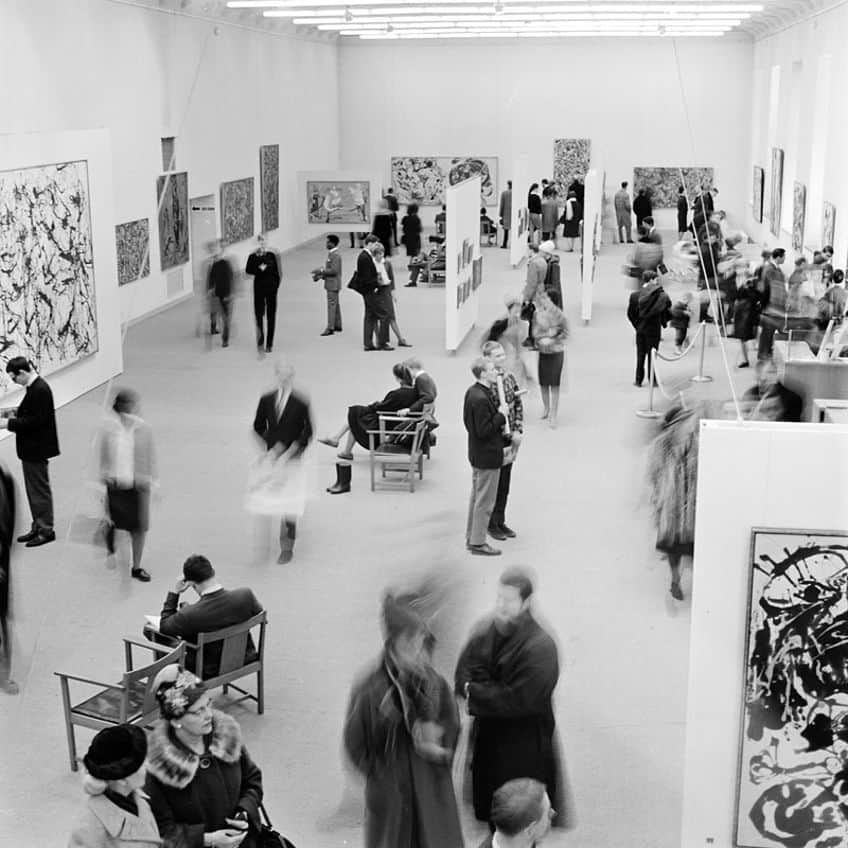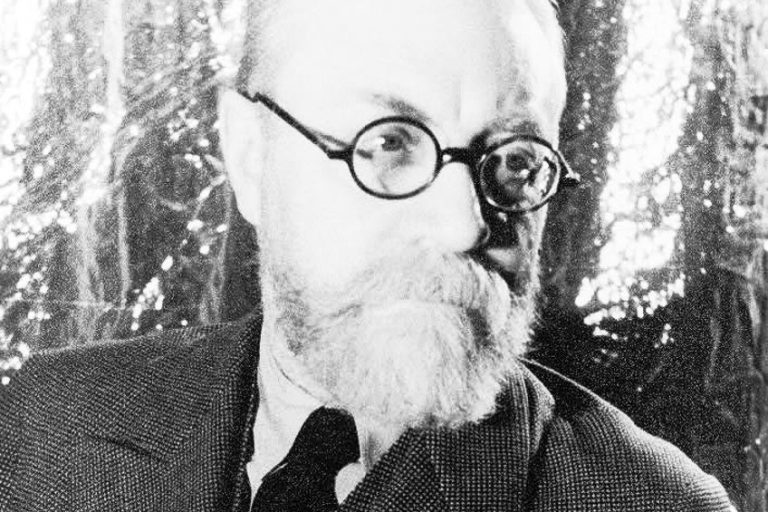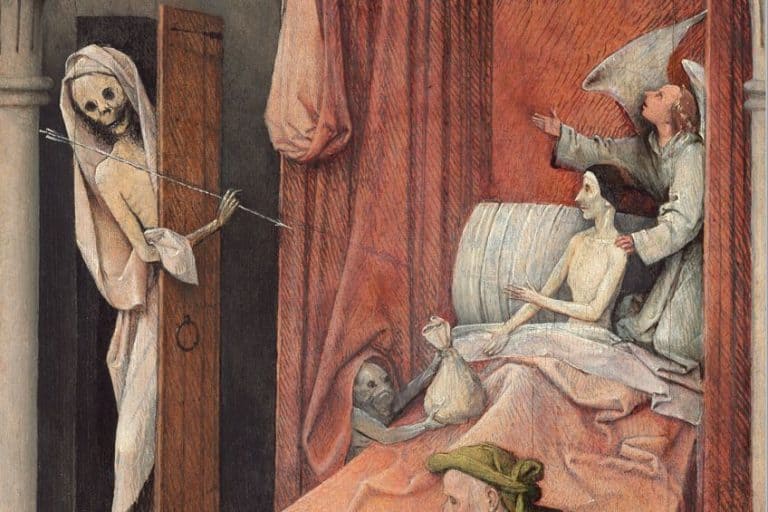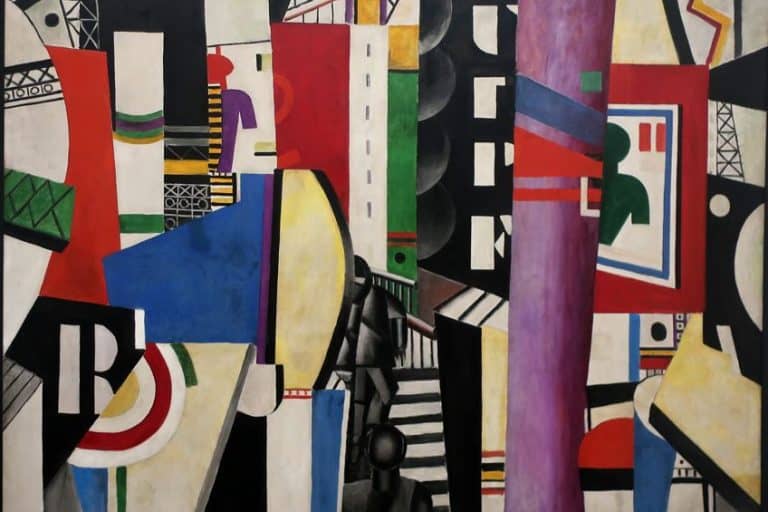“The Deep” by Jackson Pollock – The Deep Painting Analysis
The thought of Jackson Pollock will probably conjure up images of the artist dynamically moving around a canvas on the floor, pouring and flicking paint onto it. This is how the art world has come to know the famous Abstract Expressionist, but there was a deeper side to him. Read more as this article discusses one of his later artworks, titled The Deep (1953).
Artist Abstract: Who Was Jackson Pollock?
Paul Jackson Pollock was one of the most well-known Abstract Expressionists of the 20th century. He was an American artist, born in the city of Cody in Wyoming, the United States, and lived to age 44; his date of birth was January 28, 1912, and his date of death was August 11, 1956. His artistic style involved figurative and abstract artworks and he became famous for his action paintings, also called “drip paintings”. His personal life was challenging due to his alcoholism. He was married to Lee Krasner and reportedly the couple never had children. Artworks by Jackson Pollock include Mural (1943), Full Fathom Five (1947), and The Tea Cup (1946).

The Deep (1953) by Jackson Pollock in Context
The Deep painting analysis below will discuss Jackson Pollock’s artistic approach and what the possible symbolic meaning of this work could be. It will then take a closer look at the subject matter and provide a formal analysis according to how the art elements compose the piece.
| Artist | Jackson Pollock |
| Date Painted | 1953 |
| Medium | Enamel on canvas |
| Genre | Abstract |
| Period/Movement | Abstract Expressionism |
| Dimensions (cm) | 150.2 x 220.4 |
| Series/Versions | N/A |
| Where Is It Housed? | Centre Georges Pompidou, Paris, France |
| What It Is Worth | Donated to the Centre Georges Pompidou in 1976 by the Menil Foundation |
Contextual Analysis: A Brief Socio-Historical Overview
In 1953 Jackson Pollock painted The Deep, which is categorized from the later stages of his artistic oeuvre. This is a shift away from what he became known for, which were his life-size drip paintings filled with poured and splattered paint. When The Deep was painted Pollock already started moving towards a different approach in his artworks, notably creating more black and white paintings, which also tended more towards figuration.
For example, Number 14 (1951), indicates the artist’s characteristic fluidity of lines created from pouring his paint, but it also depicts traces of figures.
Formal Analysis: A Brief Compositional Overview
The Deep painting is one of Jackson Pollock’s later artworks and one that depicts a wholly different approach to what he was famous for, namely his dynamic action “drip” paintings. Although there are hints of these techniques in this painting, the composition appears as if from another world, another level from what we associate Pollock’s work with.
Subject Matter: Visual Description
Jackson Pollock’s The Deep painting is a vertically oriented composition depicting a vertical and undefined sliver or strip of black centrally placed in the lower portion of the composition to slightly off-center to the right of the upper portion. The rest of the composition is dominantly white with parts of yellow. The white reaches into the black in the middle in the form of broken lines or lines crossing over the black.
The composition appears as if the black is an empty sliver of space that can represent almost anything.
Color
The Deep by Jackson Pollock has a limited color palette, which consists of black, and white, with sparse parts of yellow and red, which create a subtle contrast against the neutral black and white. There is also gray in the central area to the right of the black, revealed underneath the white brushstrokes.
Texture
Texture in The Deep painting is created by the brushstrokes and the paint, which is thickly applied in some areas and thin in other areas. For example, in the central area over the black is a line of poured paint, which contrasts with Pollock’s gestural and seemingly higgledy-piggledy white brushstrokes composing the space around the black section.
Furthermore, the white paint around the central black strip implies an almost fog or smoke-like texture, some have also described it as resembling a cloudy quality.
Line
The black strip in the center of Jackson Pollock’s The Deep painting is in a vertical line, which appears curved and diagonal and not straight. There are other types of lines created from the brushstrokes and the way Pollock poured the paint over the black strip. These appear curved and curled.
Space
The compositional space in The Deep painting by Jackson Pollock mainly consists of black and white, the latter of which covers the black strip creating an illusion of depth, as if the black area is an opening.
Furthermore, the black area could be viewed as the positive space and the white area as the negative space, or vice versa.
Shape and Form
The Deep by Jackson Pollock is an abstracted shape with no figuration. The black strip in the center is free-flowing with the brushstrokes and paint also creating a sense of flow over it.
Jackson Into the Deep
This article discussed The Deep by Jackson Pollock and that it was part of his later artworks and notably one that explored his shifts in style and colors. It also took a closer look at the formal qualities of the composition in terms of the art elements.

The last years of Jackson Pollock’s life were tumultuous, and he reportedly suffered from alcoholism and setbacks in his art. However, he continuously explored the deeper parts of himself through his art. Every pour, drip, or brush of paint was a beacon to his depth.
https://www.youtube.com/watch?v=Q-iDWQYxlAk
Frequently Asked Questions
Who Created The Deep Painting?
The Abstract Expressionist artist Jackson Pollock painted The Deep (1953). It is an enamel on canvas and measures 150.2 x 220.4 centimeters. He painted it three years before his death from a car accident.
Where Is The Deep by Jackson Pollock Housed?
The enamel on canvas titled The Deep (1953) by Jackson Pollock is held at the Centre Georges Pompidou in Paris, France. The painting was donated to the museum in 1976 by the Menil Foundation.
What Does The Deep by Jackson Pollock Mean?
There has been wide speculation about the meaning and symbolism of The Deep (1953) by Jackson Pollock. Some scholars believe it is tied to the artist’s deep emotional states during that period of his life, in which he struggled with alcoholism and other personal challenges.
Alicia du Plessis is a multidisciplinary writer. She completed her Bachelor of Arts degree, majoring in Art History and Classical Civilization, as well as two Honors, namely, in Art History and Education and Development, at the University of KwaZulu-Natal, South Africa. For her main Honors project in Art History, she explored perceptions of the San Bushmen’s identity and the concept of the “Other”. She has also looked at the use of photography in art and how it has been used to portray people’s lives.
Alicia’s other areas of interest in Art History include the process of writing about Art History and how to analyze paintings. Some of her favorite art movements include Impressionism and German Expressionism. She is yet to complete her Masters in Art History (she would like to do this abroad in Europe) having given it some time to first develop more professional experience with the interest to one day lecture it too.
Alicia has been working for artincontext.com since 2021 as an author and art history expert. She has specialized in painting analysis and is covering most of our painting analysis.
Learn more about Alicia du Plessis and the Art in Context Team.
Cite this Article
Alicia, du Plessis, ““The Deep” by Jackson Pollock – The Deep Painting Analysis.” Art in Context. May 22, 2023. URL: https://artincontext.org/the-deep-by-jackson-pollock/
du Plessis, A. (2023, 22 May). “The Deep” by Jackson Pollock – The Deep Painting Analysis. Art in Context. https://artincontext.org/the-deep-by-jackson-pollock/
du Plessis, Alicia. ““The Deep” by Jackson Pollock – The Deep Painting Analysis.” Art in Context, May 22, 2023. https://artincontext.org/the-deep-by-jackson-pollock/.











